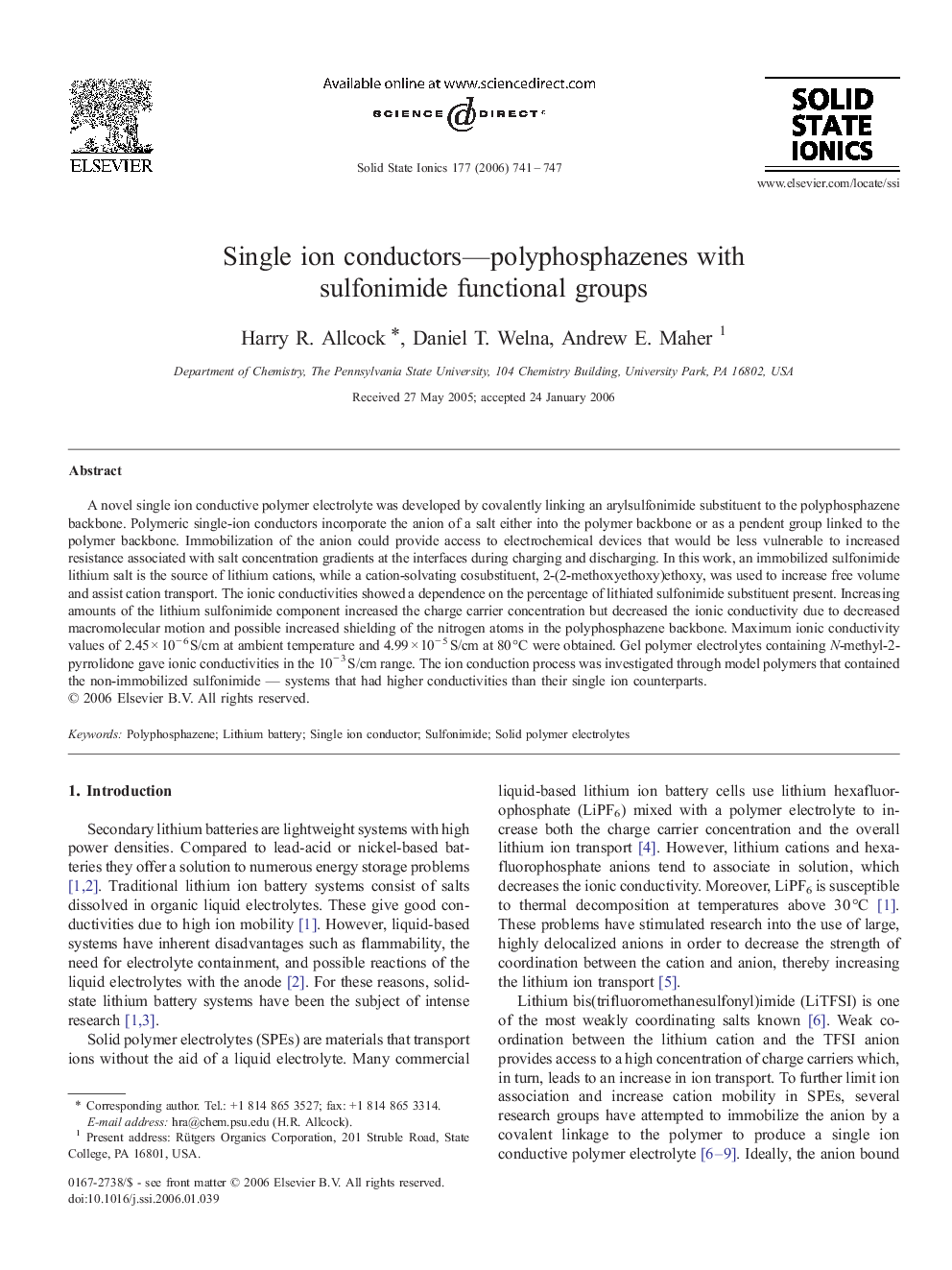| Article ID | Journal | Published Year | Pages | File Type |
|---|---|---|---|---|
| 1298983 | Solid State Ionics | 2006 | 7 Pages |
A novel single ion conductive polymer electrolyte was developed by covalently linking an arylsulfonimide substituent to the polyphosphazene backbone. Polymeric single-ion conductors incorporate the anion of a salt either into the polymer backbone or as a pendent group linked to the polymer backbone. Immobilization of the anion could provide access to electrochemical devices that would be less vulnerable to increased resistance associated with salt concentration gradients at the interfaces during charging and discharging. In this work, an immobilized sulfonimide lithium salt is the source of lithium cations, while a cation-solvating cosubstituent, 2-(2-methoxyethoxy)ethoxy, was used to increase free volume and assist cation transport. The ionic conductivities showed a dependence on the percentage of lithiated sulfonimide substituent present. Increasing amounts of the lithium sulfonimide component increased the charge carrier concentration but decreased the ionic conductivity due to decreased macromolecular motion and possible increased shielding of the nitrogen atoms in the polyphosphazene backbone. Maximum ionic conductivity values of 2.45 × 10− 6 S/cm at ambient temperature and 4.99 × 10− 5 S/cm at 80 °C were obtained. Gel polymer electrolytes containing N-methyl-2-pyrrolidone gave ionic conductivities in the 10− 3 S/cm range. The ion conduction process was investigated through model polymers that contained the non-immobilized sulfonimide — systems that had higher conductivities than their single ion counterparts.
